Pretty cattail, fluffy cattail, flour cattail! What flour? Turns out flour can be extracted from cattails from which you can make mighty fine Cattail Pancakes.
I have been way overdue for an unusual ingredient post! If you are a regular reader you know how I like to find and cook with unheard of, rare or unusual ingredients…or come up with crazy recipes. I think I have a really good one for you. I was in the foodie shop of an abbey near my cottage with a friend and she spotted a bag of cattail flour. Say what? It was pricey at 10$ for an 8 ounce bag but I had to try it. On the package was included the recipe for these Cattail Pancakes!
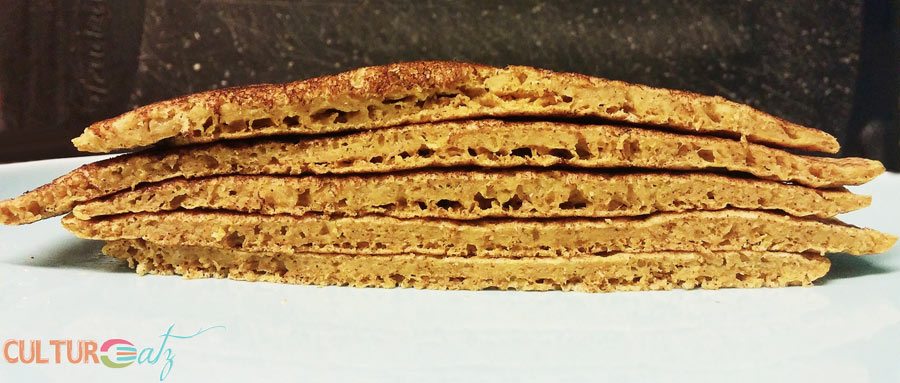
So I want to know who asked the following question: I wonder if we can extract flour out of cattails?
These plants are commonly found in marshes, wetlands and ditches along highways. Depending on which country you are from, you may know the Typha plant as cattail, bulrush, reedmace, punks, corn dog grass, or even cumbungi. But we all recognise this plant instantly from it’s distinctive shape.
Cattails are used in making chair seating, fiber, paper, building materials, and even bio-fuel. And we can use it is the kitchen! FYI avoid cattails that grow in polluted water as the plant can accumulate any toxins.
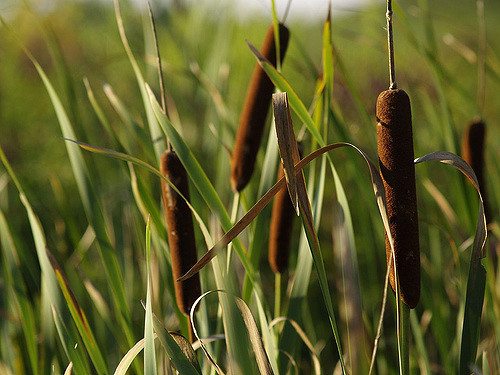
source: flickr Jeffrey Kontur
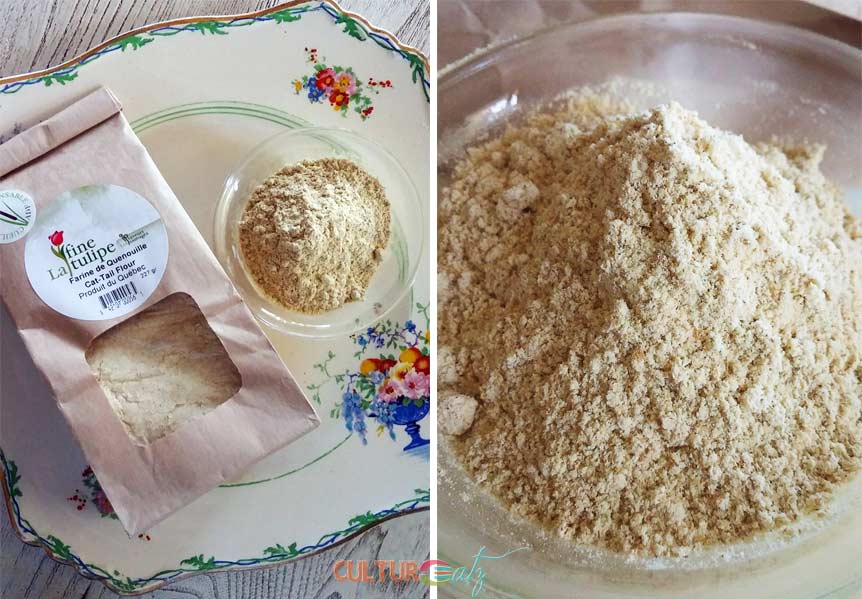
Eat your cattails
There are actually several parts of the cattail plant which are edible:
- The rhizomes, high in protein, can be processed into a flour. What is a rhizomes? It is the modified subterranean stem of a plant that sends out roots.
- The heart of young plants can be peeled and eaten raw or boiled, kind of like asparagus.
- The leaf bases can be eaten raw or cooked when young.
- Pollen can be harvested from male flowers when they are mature. It is used as a flour supplement or thickener.
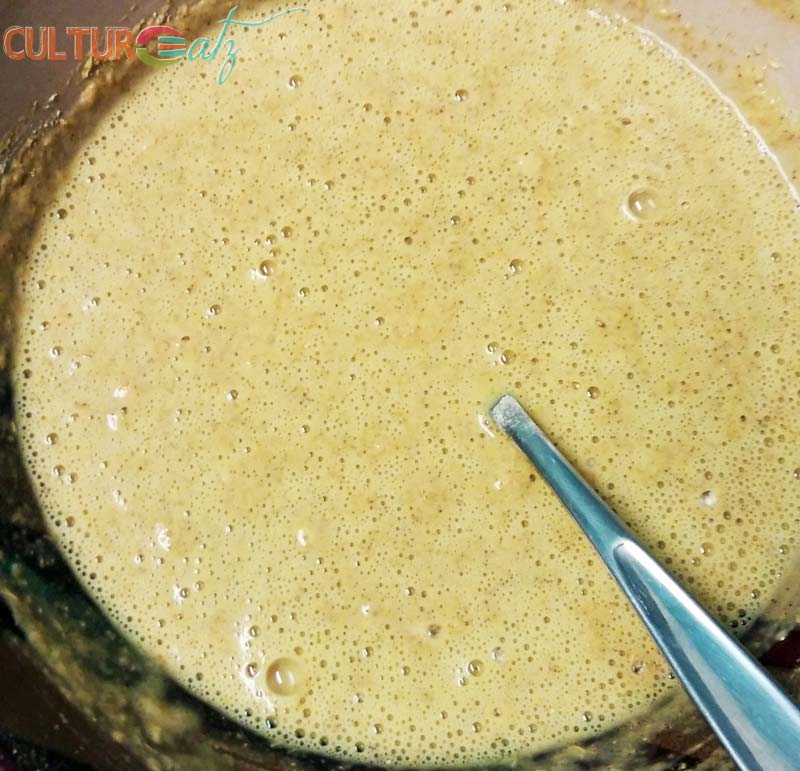
As mentioned before, the flour is made from the starchy rhizomes. The long process involves chopping and pounding the rhizomes with water, letting the mixture settle, draining the water and drying out the leftover starch from the fibers. The dried starch is then ground into a flour.
The flour will have a natural beige-yellow hue to it. Bonus: it is a gluten-free flour so everyone can enjoy these cattail pancakes!
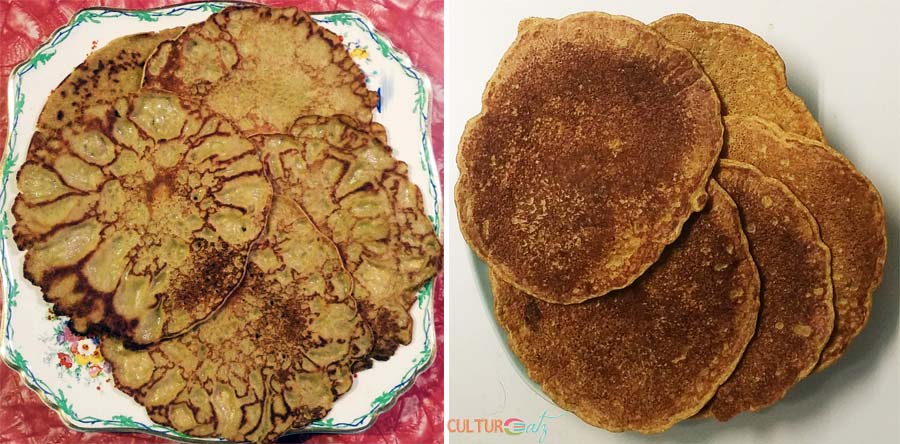
Cottage cooking challenges
I love the challenge of cooking at the cottage because sometimes you start a recipe and you realize you do not have an ingredient. In this case we started mixing the dry ingredients with the wet for these cattail pancakes and then, oops, no baking soda in the pantry! So the first ones on the left in the photo above are made without a leavener. I made the cattail pancakes recipe again in the city with the baking soda. No that is a chemistry lesson in action!
They look completely different: on the left flat but cool marks from cooking, on the right the pancakes are fluffier and evenly browned. The texture was good in both cases and the taste was pretty much the same. I guess the closest comparison would be buckwheat pancakes.
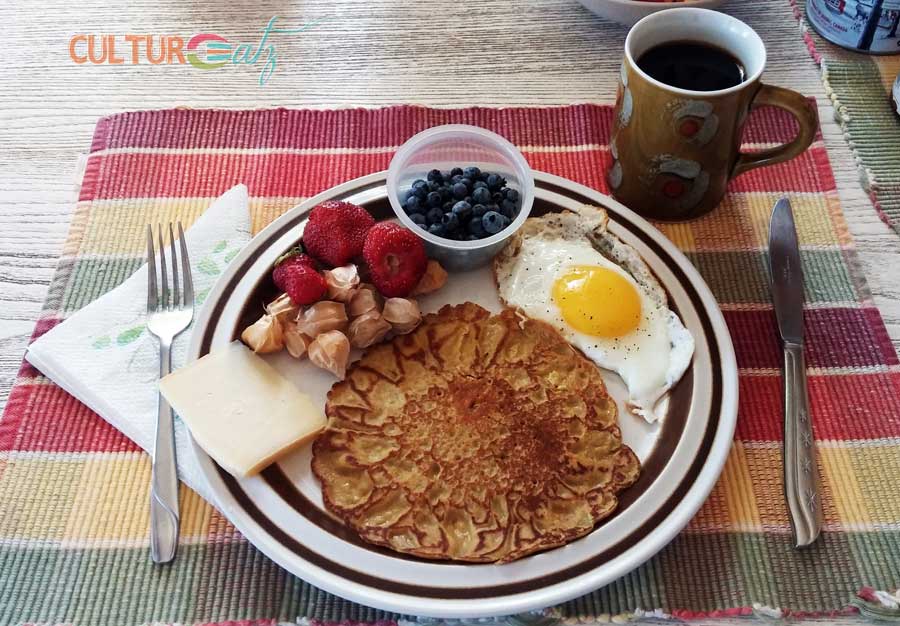
A perfect cottage weekend breakfast plate with a much more rustic presentation. Devouring these ‘closer to nature’ cattail pancakes tasted that much better when eaten in their natural environment.
Have you ever seen cattail flour?
If so, did you try it or bake with it?
What unusual flours have you come across in stores?
Want to check out some of my other Evelyne’s Unusuals posts? Here are just a few of my discoveries: Labrador tea, banana flower and vine leaves.
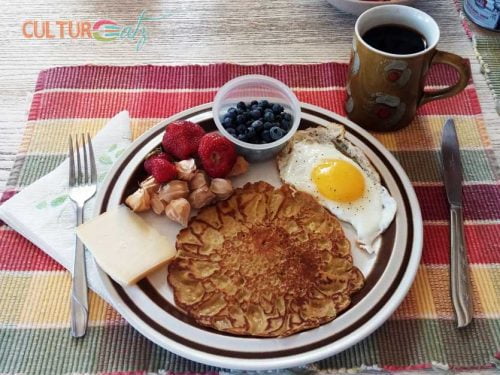
Curious about a Breakfast with Cattail Pancakes?
Ingredients
- 1 egg
- 2/3 cup cold water
- 1/4 teaspoon salt
- 1/2 teaspoon baking soda
- 2/3 up of cattail flour
Instructions
- Beat the egg, water, salt and baking soda in a bowl.
- Mix in the cattail flour, a bit at a time. Mix until homogeneous.
- Heat a little oil in a skillet on medium and pour 2 ounces (3 ounces for medium size) of the batter into the hot skillet.
- Flip the pancakes when eyelets appear in the batter and finish off cooking until slightly golden. Serve warm with syrup.




Where do you get Cattail Flour?
I have a picture on the post of a bag from La fine tulipe, but I googled them and they are now closed. I never saw it anywhere else.
Hi Evelyne,
I wondered where do you buy your cattail flour from?
I finding really hard to locate?
Any help massively appreciated 🙂
Hi Rebecca, I have a picture on the post of a bag from La fine tulipe, but I googled them and they are now closed. I never saw it anywhere else.
Wow, Eve you really amaze me each time you post about these weird ingredients and the information you put is awesome. Thank God I do not have a cat… yet hehehe. Love your discoveries and I have not seen or heard or used this type of flour before.
Thank you Amira, I love researching these things. LOL no CAT tails are involved indeed.
I’ve never used cattail flour and did know about it. But had completely forgotten about it until I read this post! Sounds like a fun ingredient. And I’m always up for pancakes! Really enjoyable read — thanks.
Thanks John and I think you are the first here to have at least heard of it. I hope you find some to try out these pancakes 🙂
I have never heard of cat tail until now…so interesting… and the pancakes look great…thanks for another fascinating post Evelyne!
Have a wonderful week 🙂
Always a pleasure Juliana 🙂 Have a wonderful week too!
I’ve not seen cattail before, who knew you could get flour from them! These look delicious.
Thanks and hope you find some to experiment with!
This is crazy! When I started your post, I envisioned flour made from the fluffy seed pods that get everywhere (and keep these things proliferating in our ditches)!!!!!
LOL I love the reaction this one is getting. And yes you could also harvest the pollen from the pods in the ditches for other recipes.
I’ve never heard of the plant being referred to as cattails and who knew they could extract flour from them. What an interesting post Evelyne.
Thanks Tandy, is there a similar plant from the plant picture where you live, and what is is called?
Wow, Evelyne I had no idea! I’ve always loved looking at cattails and never even imagined you could eat them — thank you for teaching me something new. Hope to some day get to taste those pancakes.
I was shocked when we found this flour in store Nancy lol. They are nicknamed the supermarket of the swamps too apparently. So glad you enjoyed this post!
Who knew??? Besides you, that is!! I grew up with cattails around rural ponds and lakes. My mom would ask my dad to cut some for her so she could make an arrangement for the house. These cattail pancakes look terrific! Which version did you like best?
I only found out very recently lol. I also used to pick them for arrangements when I was a kid. Oh I think texture wise the fluffy ones but they tasted the same either way.
Now this is really interesting and I love how those pancakes look…cat tail…a fun name.
Lol yes cat tail is funny, what do you call them Angie?